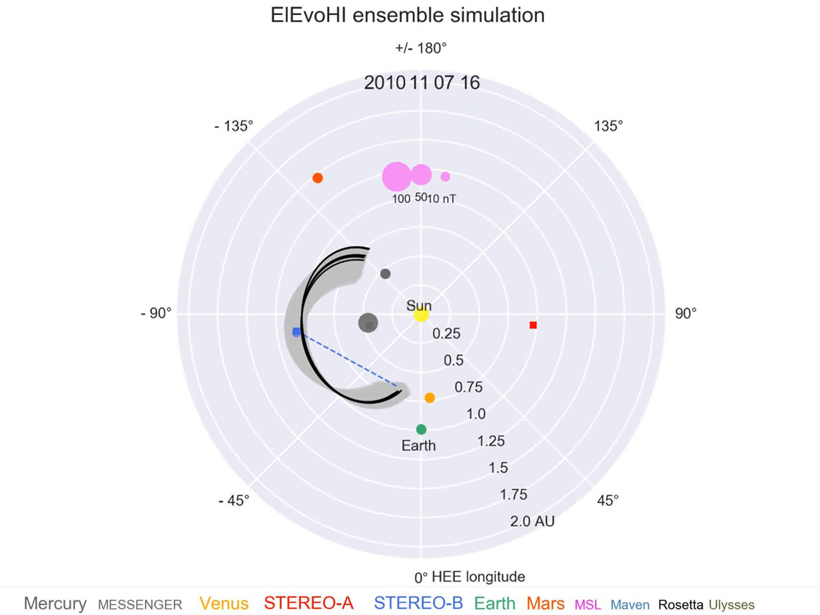Source: Space Weather
A new generation of space weather satellites is monitoring the launch and propagation of coronal mass ejections (CME) away from the Sun. Amerstorfer et al. [2018] contribute to the current debate by showing the value of ensemble modeling as a means to quantify the uncertainty in forecasts of CME propagation, and most importantly of CME arrival time at Earth. A better understanding of this uncertainty will help the operators of power grids and other infrastructure vulnerable to space weather to better prepare for adverse impacts following CME arrival. The authors also argue that a new generation of space weather monitors at the Lagrange L1 and L5 points will improve the accuracy of CME arrival forecasts. This is timely evidence as discussions in the United States and Europe are exploring how international collaboration can deliver space weather monitors to both L1 and L5.
Citation: Amerstorfer, T., Möstl, C., Hess, P., Temmer, M., Mays, M. L., Reiss, M. A., et al. [2018]. Ensemble prediction of a halo coronal mass ejection using heliospheric imagers. Space Weather, 16. https://doi.org/10.1029/2017SW001786
—Michael A. Hapgood, Editor, Space Weather
Text © 2018. The authors. CC BY-NC-ND 3.0
Except where otherwise noted, images are subject to copyright. Any reuse without express permission from the copyright owner is prohibited.

